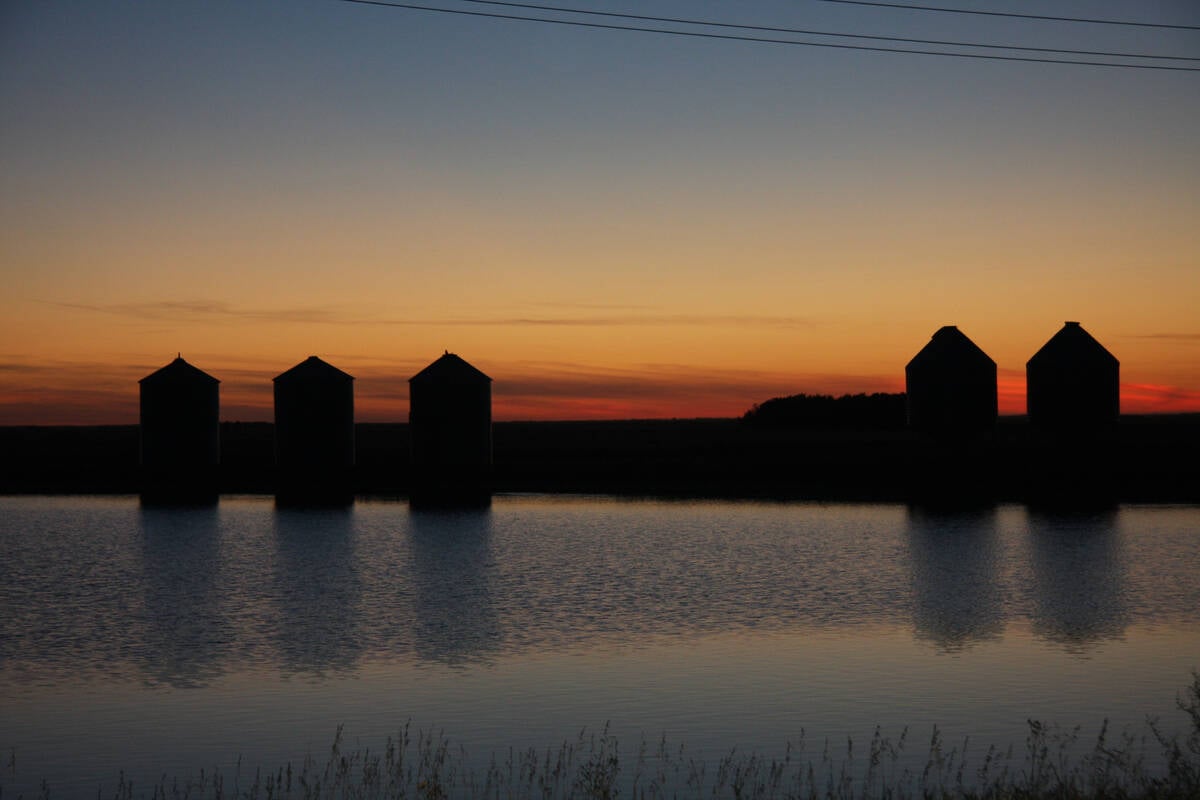We have enjoyed beautiful fireworks displays this summer. The First Nations had a half-hour display across the lake, while Rosetown, Sask., celebrated its centennial with fireworks. On both evenings, I noticed other individuals setting off their own fireworks. It can be very dangerous if not done properly.
Fireworks safety
Before using fireworks for a family celebration, check your community’s bylaws regarding their purchase, possession and use. Don’t use them if there is a fire ban or dry weather conditions.
When lighting fireworks, the prevailing wind should be blowing away from the spectators and buildings.
Read Also

Know what costs are involved in keeping crops in the bin
When you’re looking at full bins and rising calf prices, the human reflex is to hold on and hope for more. That’s not a plan. It’s a bet. Storage has a price tag.
Only one responsible adult should handle the fireworks and be in charge of setting them up and lighting them. Under no circumstance should children be allowed to handle them.
Even sparklers can burn at high temperatures and can easily ignite clothing and burn flesh. Their sparks can also cause eye injury. For this reason, sparklers should never be used in the house and should be doused in a bucket of water or sand.
Spectators should be at least 20 metres away from the fireworks and sand, a garden hose and fire extinguisher should always be on hand.
The individual lighting the fireworks should wear safety glasses or goggles, gloves and non-flammable clothing, such as cotton.
The operator should read the instructions, cautions and warnings on each piece prior to the event. Fireworks must be handled carefully, with caution taken not to drop them. They should never be carried in pockets or be handled while smoking.
Some fireworks require a flat, solid base, such as a piece of wood while others are best buried to at least half their length before they are ignited. They all need to be firmly supported and pointed away from the spectators.
Never light while holding fireworks. Light the piece, then move away quickly.
Only one firework should be lit at a time and the remainder should be in a closed box away from where the firework is being lit.
If a firework is defective, do not attempt to re-light a dud. After 30 minutes, it should be placed in a bucket of water.
Thirty minutes after the fireworks are finished, the area should be cleaned up and checked for duds.
Everything should be placed in a bucket of water for the night. In the morning, the area should be checked again and items safely discarded.
Always keep fireworks and sparklers out of the reach of children, preferably in a locked cupboard or drawer.
Sources: The Canada Safety Council, Natural Resources Canada and the Toronto Fire Service.
Preventing freezer burn
Mae Woronuk sent in the following tip for preventing freezer burn on the chickens they butcher.
For a whole chicken, she puts a piece of wax paper in the neck opening and places the chicken in a freezer bag, adds a bit of water and stands the chicken up until the neck is frozen closed. The next day, she fills the cavity with water and freezes the bird.
Once frozen, she freeze glazes the outside of the chicken with water. This helps to seal the meat and reduces freezer burn.
When defrosting the chicken in the fridge, place it in a deep container to catch the water. Mae said that a roaster that they cooked recently “looked like it was freshly butchered.”
She also freeze glazes individual chicken pieces by freezing the pieces of chicken on a cookie sheet and dipping the frozen chicken in a bowl of water to glaze them the next day.
Once the glaze is frozen, she bags the chicken pieces and returns them to the freezer.
Low interest rates
Interest rates are a current topic of discussion for many people. Investors complain about the lack of return on their investments. Borrowers find interest rates appealing.
One way to save is to reduce borrowing costs. Contact your lender to see if you can get a lower rate of interest on your loan.
A variable rate of interest that fluctuates with the money market offers the lowest rate. Maximizing payments will reduce the principal and shorten the length of the loan, reducing the total amount of interest that will be paid.
Consider locking in your interest rate to maintain low borrowing costs. When the interest rates begin to rise again, your loan commitments should have been reduced considerably and you should have more money available for saving investments.
Weed killer tips
For small dandelions in your lawn, pour 1/2 teaspoon (2 mL) of vinegar on them. If the dandelions are between sidewalk blocks, pour boiling water over them. The boiling water also works great on chickweed.
Source: Mae Woronuk.
Garlic pork
1 large onion
1/2 cup soya sauce 125 mL
1/2 cup granulated sugar 125 mL
1/2 cup brown sugar 125 mL
1 cup black tea 250 mL
2 tablespoons molasses 25 mL
3 garlic cloves, peeled and crushed*
2 tablespoons cornstarch 25 mL
2 tablespoons cold water 25 mL
4 pounds pork button bones 2 kg
Pork button bones are the rib tips. They are very meaty but require caution when eating to separate out the small bones. I often think it is like eating sunflower seeds. Pork chops or spareribs can also be used with this recipe.
Cut the onion into slices and place in the bottom of a crockpot.
Rinse the pork button bones under cool water and place in a colander to drain.
Mix the soya sauce and garlic together in a large bowl. Add the drained pork and coat well. Lay the meat pieces on the bed of onions in the crockpot.
Pour in the remaining sauce. Cook on low six to eight hours or on high for four hours.
When the meat is tender, put it on an oiled cookie sheet, with sides.
Place on a hot barbecue for 10 to 15 minutes or in the oven under the broiler for three to five minutes to brown the meat. Watch closely as it can burn quickly.
Pour the remaining sauce into a casserole that is large enough to hold the meat.
While the meat is browning, mix the cornstarch in the water to dissolve. Add to the sauce in the casserole. Place in the microwave to simmer and thicken for two minutes on high power, stirring after one minute.
When the meat is beginning to darken, add it to the sauce and serve.
- I find the easiest way to peel and crush a garlic clove is to take a small slice off the root end and then lay the clove on a cutting board and firmly press down on the garlic with the side of a wide chef’s knife.
Press down two or three times in different directions until it’s crushed. The papery skin will just slip off.
Betty Ann Deobald is a home economist from Rosetown, Sask., and one of four columnists comprising Team Resources. Send correspondence in care of this newspaper, Box 2500, Saskatoon, Sask., S7K 2C4 or contact them at team@producer.com.














